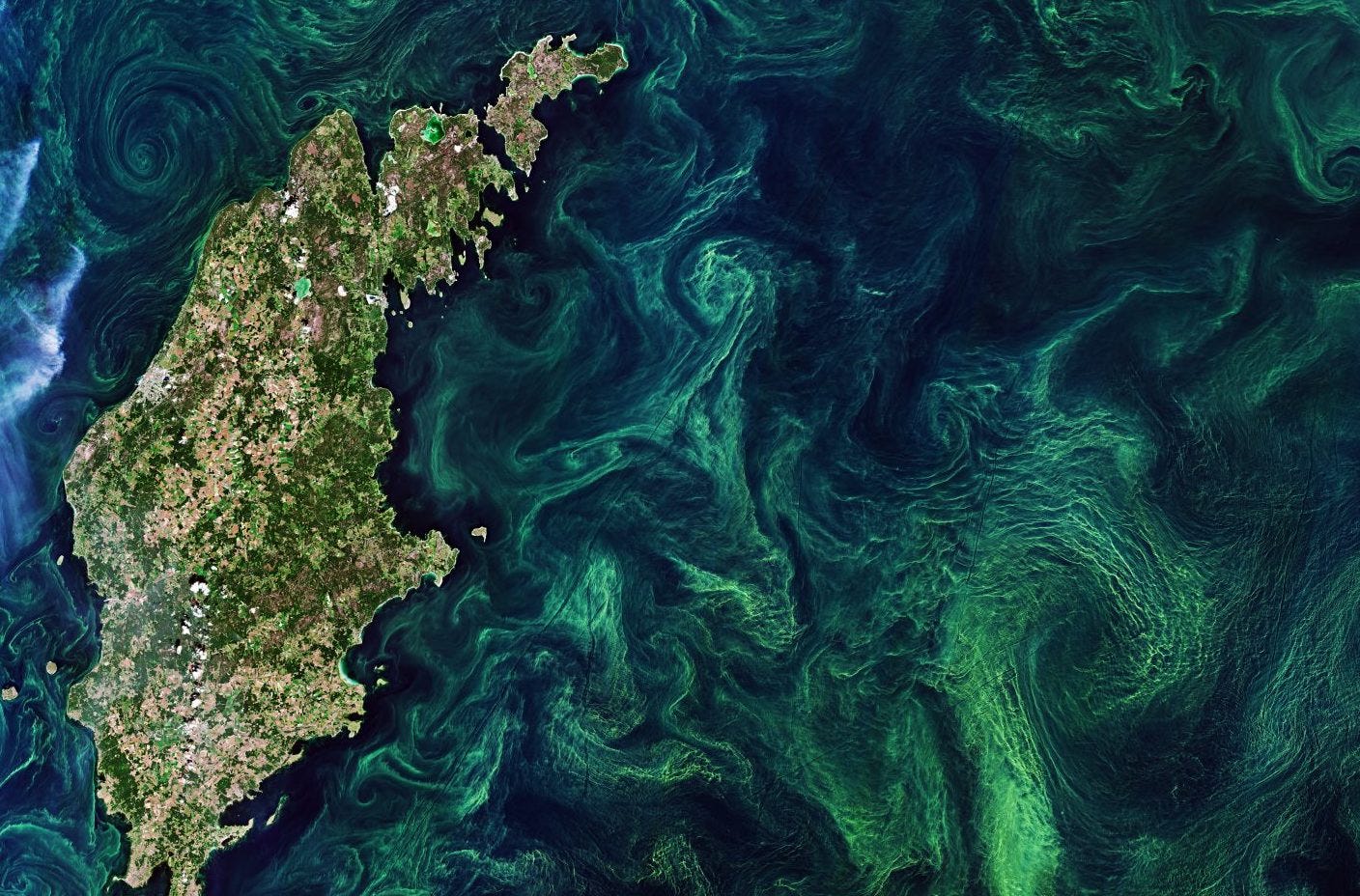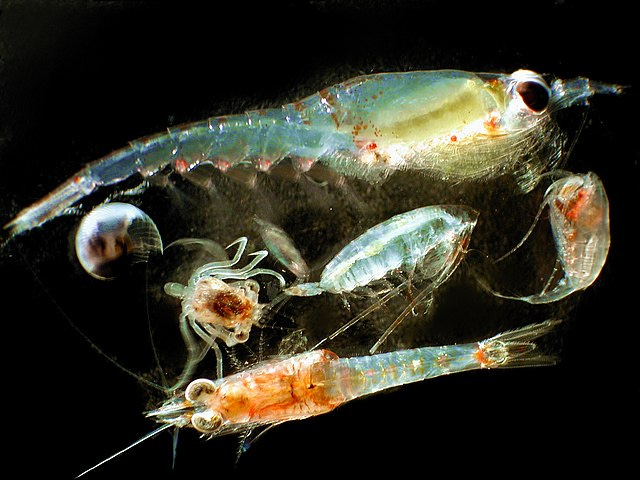Welcome to another edition of Deep Dives by Beached - an in-depth exploration of everything oceanic, from scientific discoveries to marine mysteries.
Expect a bit of history, science and adventure, as we dive deep into the big blue 🤿
Have you ever wondered how in the big blue (all 139 million square miles of it) all creatures, big and small, are able to find food? Coastlines, shallow seabeds, and dense coral ecosystems, are essentially the cities of the ocean. Full of all-you-can-eat diners and somewhere to grab a snack on every corner. But for those who live outside of these areas, where traffic is light and organisms don’t swing by as often, where do those ‘country folk’ of the sea get their sustenance?
The blue whale will travel 4000 miles every year across the ocean to find the best food in the best location. The spotted garden eel burrows down on the sea floor with its head sticking out waiting for plankton to pass by. But what about the in-betweeners? The ones who didn’t stay in their hometown but aren’t a world traveller either?
Well, they take part in what is called diel vertical migration.
Every evening, billions of creatures, from zooplankton and cephalopods to lanternfish and shrimp, embark on a synchronised journey up and down the water column1. It’s a spectacle so grand that it is thought to be the second largest daily movement of biomass on the planet - surpassed only by human commuters.
As dusk settles, these bold travellers ascend towards the surface. Drawn by the promise of food, they find the upper layers rich with phytoplankton which they can dine on under the safety of darkness until dawn breaks. And this vertical migration is no small feat either as they cover hundreds of metres in just a few hours, with a select few ascending from almost 1000 metres below. For (some) creatures mere millimetres in size, it apparently requires as much effort as it would for you or I to swim through a fluid as viscous as treacle!

The scale of this migration became evident during World War I, when naval echosounders detected dense oceanic layers that were initially mistaken for the sea bottom. These "deep scattering layers” were actually the migrating mass, and appeared shallower at night than during the day – revealing the rhythmic nature of their movement. Today, scientists use a variety of tools to study the movements, from plankton nets that show different catches from day to night, to modern echosounders that provide a continuous view of the water column's dynamic ecosystem.
All this effort, just to survive. As energetically costly as it may be, by venturing to the surface at night, these animals can feast while staying hidden from sharp-eyed predators who rely on light to sense their prey. There are other benefits too: some animals do it to avoid harmful ultraviolet rays that could damage their DNA. Others use ocean currents at different depths to move to new feeding areas. The colder, deeper waters where they dwell during the day also have its advantages. In these chilly depths, some creatures can grow bigger or produce more eggs because their bodies are using less energy to stay alive.
The effects of this massive migration go beyond the survival of billions of ocean creatures too, it impacts our planet in a big way. When they eat near the surface and then swim back down, they take carbon with them in their bodies and in their waste. This helps sequester carbon in the deep sea, keeping it from accumulating in the atmosphere.
Also, this daily rush creates turbulence in the water, stirring up nutrients and particles, and even moving water across boundaries. Like a giant mixer, keeping the ocean well-blended of the key nutrients marine life needs to thrive.
So now we know. As we go about our lives on land, below the seemingly calm ocean surface, a mass exodus is occurring from dusk til dawn. Countless tiny travellers setting off on a diel vertical migration, shaping the oceans and our planet in ways scientists are still now discovering. Proof that the smallest creatures can make the biggest waves.
Here at Beached we are building a community that can put our brains and resources together to highlight and fund solutions to the problems facing the ocean and its inhabitants. I hope you’ll join our humble community and click subscribe for free or support our work by purchasing the paid subscription.
All Beached posts are free to read but if you can we ask you to support our work through a paid subscription. These directly support the work of Beached and allow us to engage in more conversations with experts in the field of marine conservation and spend more time researching a wider breadth of topics for the newsletters. Paid subscriptions allow us to dedicate more time and effort to creating a community and provide the space for stakeholders to come together, stay abreast of each other’s work and foster improved collaboration and coordination.
One day Beached hope to donate a large percentage of the revenue from paid subscriptions to marine conservation organisations and charities to support their work too. Working together, we can reverse the degradation of our oceans.
Amie 🐋
It’s common in marine and freshwater communities.




I found this exhilarating, thank you so very much!